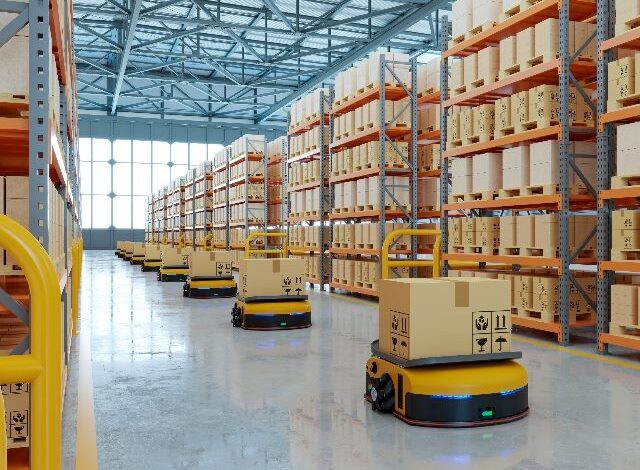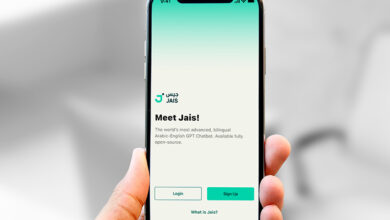Unlocking AI’s Power: The Vertical Approach

The Gist
- Next wave. The next wave of growth in generative AI will be the verticalization and specialization of generative AI platforms with more focused and niche large language models.
- Natural evolution. The evolution to vertical AI is a natural one that the software industry has seen before and the next logical wave for accelerating AI adoption.
- Gaining traction. Many industry AI solutions are already beginning to gain traction in key industries such as financial services, legal, insurance, healthcare and many others.
- Critical data. Data with subject matter and industry expertise will be critical for creating verticalized AI solutions.
While horizontal products like ChatGPT, Gemini, Midjourney, Dall-E have given millions of users exposure to the power of AI, the real power of the technology is still ahead of us in the form of vertical AI.
The Verticalization of AI
The next key wave of generative AI will be the verticalization and specialization of generative AI platforms with more focused and niche large language models.
The performance, relevance and cost of building and tuning smaller, focused models with industry-specific data, documentation, terminology, processes and use cases makes it easier to achieve the accuracy required for widespread customer adoption.
Most of 2023 was spent experimenting with these broad-based platforms in search of high-value use cases to deploy within the enterprise. Many proofs-of-concept followed, but not many applications were scaled and/or delivered to production. According to Gartner, by the end of 2023, there were less than 5% of generative AI enabled applications in production environments. That number is expected to grow to 80% by 2026 and will likely fuel the adoption of vertically-oriented generative AI applications.
The broader large language models have inherent risks associated with their use. This includes data complexity, lack of traceability or the explainability of these largely opaque models. There are also potential fair use issues due to vague controls and governance around model training. This can lead to reputational risks and legal and compliance risks from the use of toxic and/or biased information.
Demand is now increasing for generative AI in many industries, such as healthcare, life sciences, legal, financial services and the public sector.
Related Article: How to Pick the Right Flavor of Generative AI
Vertical AI and the Natural Evolution of the ‘AI Stack’
This evolution to vertical AI is a natural one that the software industry has seen before. The Software-as-a-Service (SaaS) market has had vertical solutions for some time, with successes like Veeva (life sciences CRM), Procore (construction management) and Servicetitan (service platform).
As the technology matures, the “AI stack” is getting formed. Foundational models are the bedrock of the AI stack with leaders being Anthropic, Cohere and OpenAI. The “picks and shovels” of AI will sit at the infrastructure layer, a catch-all layer that includes a variety of categories including data enhancement, fine-tuning, databases and model training tools. Examples of this are companies like Hugging Face (model discovery), Weights & Biases (machine learning operatons — MLOps) and LangChain (large language model — LLM — creation).
At the application level of the stack we will see both horizontal and vertical applications. Vertical applications will have two flavors: purpose-built vertical AI applications and existing applications that embed AI technology to create vertical-specific offerings.
As the lower layers of the AI stack become commoditized through open-source availability, the real winners will be companies that create vertical offerings. Foundational models will become a utility, much like electricity, with AI as a service model emerging.
Vertical solutions that can access proprietary industry data, effectively train large language models against those datasets and package those models through applications will ultimately deliver tremendous utility with fast time-to-value for customers.
These are the companies that will win the AI long game.
Related Article: Generative AI Might Be Slamming Right Into a Resource Wall
Altering the Legal Business Model
Generative AI will have a disruptive impact on the legal industry by directly impacting the way legal work is done. It also has the potential to change the current law firm-client business model. While much remains unsettled, in less than 10 years, generative AI is likely to change corporate legal departments and law firms in very profound ways. According to the Future of Professionals report, 70% of legal professionals said they believe AI and generative AI will have a transformational or high impact on the legal profession within the next five years.
Here are some of the vertical AI players emerging in the legal industry to keep an eye on.
Harvey AI is a generative artificial intelligence platform created specifically for legal professionals. The startup, founded by Winston Weinberg and Gabriel Pererya, is not trained on general-purpose data but uses specific datasets containing legal information and case law material. When used by a law firm, Harvey AI is then trained by the firm’s own work products, cases and templates. It’s not much different than a new employee’s onboarding program.
Paxton AI is a new type of AI model called the “large legal model.” It integrates vast legal databases, covering federal and state case law libraries, regulatory guidance documents and more. It also allows legal firms to do custom uploads of firm research and precedents. Paxton AI can review documents for regulatory compliance, monitor live feeds for relevant regulatory changes, and even summarize complex topics into legal briefs and training guides.
Alexi is another AI platform focused on interpreting legal questions (prompts) and generating high-quality answers in a memo format. It uses the most authoritative legal sources, summarizes the salient points and generates a well-structured memo. It reduces the time and effort required for research.
However powerful these platforms become, the use of generative AI in the legal industry needs proper governance. The now famous case of a NY lawyer who used ChatGPT to generate a legal brief with fake citations caused many law firms to quickly prohibit access to public generative AI platforms. While an understandable reaction, banning access to generative AI platforms is like banning access to the internet or the use of smartphones.
These AI platforms are not a replacement for lawyers. However, the right AI-powered tools can help lawyers work more efficiently and productively while reducing costs. The potential benefits of legal AI platforms are clear — using AI to assist with research, drafting and other routine legal tasks could help save law firms time and cut down on their clients’ bills.
The other interesting thing to watch is the impact this technology will have on billing models. Today, most of the billing models at a law firm are based on billable hours. This is likely to cause a real sea-change in how legal services are packaged and charged.
Related Article: Beyond the Hype: Real-World Impact of Generative AI in Content Management
Fully Automated Finance Operations
The era of robotic process automation (RPA) never fully delivered on the promise of fully automated back-office functions. Many enterprises ended up with semiautomated processes where portions of the process were automated but not end-to-end. This was especially true in finance operations. The next wave of automation will come from fully autonomous processing.
One example is Vic.ai, a company focused on autonomous invoice processing. Its platform automates 80% of invoice processing for accounting firms. It replaces a highly error-prone workflow that can take over 20 minutes per invoice to 30-45 seconds leveraging its proprietary model. Vic.ai is designed to work with existing enterprise resource planning (ERP) systems and accounting packages and has a flexible, open API for easy integration. This saved one customer over 60,000 hours in their first year, lowering costs by over 90%.
Financial research remains a tedious part of providing investment analysis on companies, stock exchanges, foreign exchange market (forex) training, bonds and many other financial topics. Research is a well-suited use case for generative AI.
Start-ups like Brightwave.io are paving the way for the future of financial research by creating a platform that generates tight, actionable financial analysis on any subject. Brightwave.io was founded by engineers with more than 20 combined years of experience in machine learning and artificial intelligence. Brightwave.io reasons over hundreds of millions of data points simultaneously to generate a high-resolution view of the market.
And there are numerous platforms such as Truewind.ai that are using generative AI to power accounting workflow automation for accounting firms and world-class bookkeeping services for startups and small and midsize businesses (SMBs). Its AI assistant does the repetitive work of categorizing transactions, finding supporting documentation and closing the month-end books. Accountants monitor a queue of items to review, overseeing its personal digital accountant.
Related Article: Generative AI in Technology: Unleashing Higher Productivity
Better Decisioning in Insurance
The insurance industry can significantly benefit from incorporating machine learning and artificial intelligence in its workflows. For starters, machine learning in insurance can help automate standard day-to-day functions and make processes more efficient. These technologies can help companies analyze and utilize vast amounts of customer data to make better decisions and offer more profitable and personalized insurance policies to their customers. Generative AI can aid in risk assessment, underwriting, claims management and customer service.
Sixfold is the first AI purpose-built for insurance underwriters. It has created a collection of custom base models crafted specifically for underwriting tasks. Sixfold ingests risk preferences from an array of sources to craft a refined model that distinguishes between positive, negative and disqualifying risk factors. The platform quickly collects data from the insurance application, additional documents and, where applicable, third-party sources.
Shift Technology delivers AI-powered decisioning solutions to benefit the global insurance industry. Its products enable insurers to improve combined ratios by optimizing and automating critical decisions across the policy lifecycle. Shift solutions help mitigate fraud and risk, increase operational efficiency and deliver superior customer experiences. Its platform has analyzed over 3 billion policies, claims and documents leading to identifying over 13 million suspicious claims.
While some insurers have moved quickly to use AI technology to automate tasks, personalize products and services, and generate new insights, the broader adoption of generative AI among insurers is still very low. According to Gartner, only 6% of insurance respondents in the 2024 Gartner CIO and Technology Executive Survey have indicated that they have adopted the technology.
Further adoption must become a competitive imperative. As insurers expand their use, they will need to adopt a governance model and approach to risk management to address a wide array of risks, such as data security, privacy and regulatory concerns.
Related Article: Generative AI Technologies: Now and in the Future
Improving Patient Outcomes in Healthcare
The healthcare industry is another process and data-intensive business that also has significant opportunities to leverage AI. Consumers are demanding more personalized and convenient services from their health insurance. Payers are facing rising healthcare costs and increased competition.
It is estimated that AI could save the U.S. healthcare industry up to $100 billion a year by streamlining processes, improving efficiency, reducing errors and ultimately lowering expenses within the healthcare system.
By automating certain tasks, enhancing diagnostic accuracy and personalizing treatment plans, AI can transform the way healthcare is delivered, potentially leading to substantial financial benefits for the industry as a whole. Generative AI can also help payers provide better service to patients and customers by enhancing diagnostic accuracy and personalizing treatment plans.
HCA Healthcare, which operates 180 hospitals and approximately 2,300 ambulatory sites of care across the United States and the United Kingdom, is using generative AI to improve patient handoffs between nurses. As part of a pilot program, approximately 75 emergency room physicians at four HCA Healthcare hospitals started using Google’s AI technology to quickly document key medical information from conversations during patient visits. It is part of a collaboration among HCA Healthcare, Google Cloud and Augmedix, an AI healthcare technology company that specializes in ambient medical documentation.
According to a study in JAMA Internal Medicine, 58% of physicians said time spent on documentation limits the amount of time they can spend with patients.
Inspired by the Hippocratic oath, the code of ethics to “do no harm,” Hippocractic.ai has created an LLM solution that focuses on nondiagnostic healthcare tasks such as medication onboarding and monthly reconciliation, hospital and payer policy questions, plus electronic health record (EHR) assistance. The goal of Hippocratic AI’s solution is to reduce healthcare system costs and to help solve nursing, social worker and nutritionist staffing shortages.
Abridge is a generative AI platform that transcribes and summarizes medical conversations in real-time for patients, providers and payers. Abridge is fully integrated into Epic, a healthcare software company that develops electronic medical record software for hospitals and large practices, and has the potential to save clinicians over 70 hours per month in documentation.
The Mayo Clinic has been a pioneer in the use of AI technology. It receives over 2 billion visitors to its website annually, and it has deployed generative AI-based enterprise search to improve information sharing about everything from understanding symptoms to explaining drugs and treatments.
Data Is the Key to Verticalization
We are still in the early innings of vertical AI specialization. Vertical AI can solve mission-critical, vertical-specific workflows that drive customer stickiness and optimize business operations.
Vertical AI companies that have access to proprietary industry data for training specialized large language models and create applications with pre-built workflows and functional modules will be the winners. This will require data that contains subject matter expertise to provide relevant and contextual solutions to problems, emphasizing the importance of incorporating human expertise into the dataset.
Vertical AI solutions will be the key to accelerating AI adoption in the future.
Learn how you can join our contributor community.



